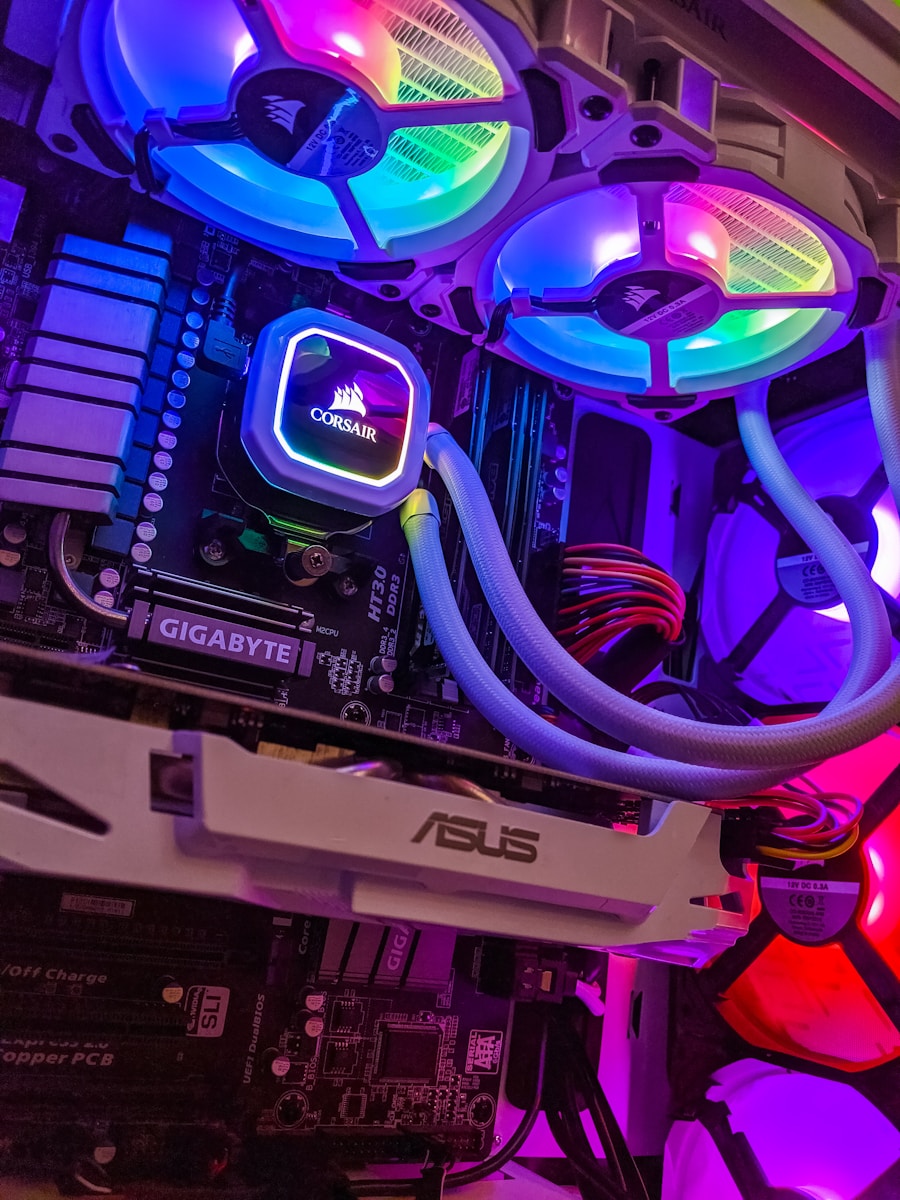It’s time to mic-up your talent, do you have the right lavalier microphone for the job?
You might not yet see the importance of lavalier microphones (especially if you’ve been using cheap ones), but lavalier microphones are actually one the MOST important tools in your audio bag.
Of course, microphone placement is 99% of the work when it comes to lavalier microphones.
The other 1% is equipping yourself with reliable lavalier microphones that won’t drop out mid-take.
That’s right, we’re only going to take the best wireless lavalier microphones as production sound mixers/recordists working on TV and film sets.
However, you don’t need to pay much to get something reliable nowadays!
You just need to know what to look for, that’s where we’ll start…
Table of Contents
1. Hollyland LARK MAX
Specifications
Microphone (Internal & Lavalier)
- Polar Pattern: Omnidirectional
- Frequency Response: 20 – 20,000 Hz
- Self-Noise: 24 dB(A)
- Max SPL: 128 dB
Transmitter/Receiver
- # of Channels: 2
- Operating Range: 2.4 GHz (Wi-Fi)
- Transmission Range: 820 feet/250 meters
- Onboard Recording: YES
- Integrated Microphone: YES
- Power Requirements: Internal battery (rechargeable)
- Battery Life: 7.5 Hours TX/9 Hours RX
- Included Accessories: TX/RX, Wind Muffs, Cables/Adapters, Storage Case
The Hollyland LARK MAX is a game-changer for professionals seeking a compact 2.4GHz wireless microphone system. When working on film and TV sets, reliability is paramount, and finding a trustworthy 2.4GHz system in a compact format can be challenging. However, the LARK MAX shines in this regard.
With its MaxTimbre Mic technology and advanced Environmental Noise Cancellation (ENC), the LARK MAX delivers exceptional audio quality, effectively eliminating unwanted resonances and minimizing ambient noise. While there is a slight latency due to the DSP process, the noise reduction is impressive and usable, particularly in post-production.
The system features a built-in 8GB storage for backup recording, eliminating the need for additional microSD cards. It even offers automatic recording when the transmitters are lifted off the charger, ensuring you don’t miss important moments.
For content creators, the LARK MAX is compatible with both iPhone and Android devices, simplifying the recording process. Its versatility in microphone placement, including magnetic options, provides creative flexibility.
The LARK MAX’s battery life is commendable, with the transmitter and receiver offering up to 7.5 and 9 hours of operation, respectively. Combined with the charging case, you can get an impressive 22 hours of use.
The package includes essential accessories and is thoughtfully designed, offering an excellent unboxing experience. The system is suitable for a range of recording setups, thanks to its stable wireless connection and broad compatibility.
In comparisons, the LARK MAX competes favorably with other wireless systems, boasting superior onboard microphones and noise reduction. While it lacks timecode sync like the RODE Wireless PRO, its built-in microphone quality is a standout feature.
Overall, Hollyland has created a compelling and competitively priced wireless system with the LARK MAX, offering outstanding audio fidelity and usability. While some additional features like 32-bit float recording and timecode sync could be beneficial, the LARK MAX stands as an impressive solution for professionals.
2. RODE Wireless GO II
Specifications
Microphone (Internal)
- Polar Pattern: Omnidirectional
- Frequency Response: 50 – 20,000 Hz
- Sensitivity:
- Self-Noise: 22 dB
- Max SPL: 100 dB
Transmitter/Receiver
- # of Channels: 2
- Operating Range: 2.4 GHz (Wi-Fi)
- Transmission Range: 656.2 feet/200 meters
- Onboard Recording: YES (via app)
- Integrated Microphone: YES
- Power Requirement: Internal battery (rechargeable)
- Battery Life: 7 Hours
- Included: Wind Muffs, Furry Windshields, Cables/Adapters
Unless you’re REALLY looking to save some cash, you’ll be better off with the RODE Wireless GO II. It’s definitely got more reliable communication (still not the best though) and a brighter LCD.
It’s also got a companion app that allows you to configure the transmitter to record internally (7 hours uncompressed/24 hours compressed).
That’s a HUGE advantage if you experience drop-outs.
The only real drawback with the RODE Wireless GO II is that you can’t monitor your live audio (the Synco G2 can) and it doesn’t include NEARLY as much.
To be more specific, the RODE Wireless GO II doesn’t include…
- External lavalier microphone(s)
- Cables/adapters
- Carrying case (although it includes the furry windshield(s))
Don’t worry though, the transmitter also includes an integrated omnidirectional microphone.
In every other aspect, the RODE Wireless GO II is almost identical to the Synco G2.
I would just feel much more comfortable using it for professional gigs like weddings, interviews, etc… However, I’m NOT a videographer (I get hired to boom, not to clip mics).
That being said, I definitely recommend the RODE Wireless GO II for solo-videographers.
3. Sennheiser EW 112P G4 (ENG Set)
Specifications
Microphone (Sennheiser ME 2-II)
- Polar Pattern: Omnidirectional
- Frequency Response: 20 – 20,000 Hz
- Sensitivity: 17 mV/Pa
- Self-Noise: 32 dB
- Max SPL: 130 dB
Transmitter/Receiver (Sennheiser SK100 & EK100 G4)
- # of Channels: 1
- Operating Range: A1 (470Hz – 516 Hz), A (516-558 Hz) or B (566-608 Hz)
- Transmission Range: 330 feet/100 meters
- Onboard Recording: NO
- Integrated Microphone: NO
- Power Requirement: 2x AA Batteries
- Battery Life: 12+ hours with THESE batteries
- Included: RX/TX, Lavalier Microphone, Cables/Adapters, Shoe Mount, Belt-Clips
When I first started working with the Sennheiser EW 100 series wireless lavalier microphone sets, I was amazed by the reliability. I never experienced dropouts within the transmission range.
The durability of the EW 100 transmitters and receivers also impressed me.
That’s why I’m still using them to this day and plan to keep doing so.
However, I have to admit that the included microphone (the Sennheiser ME 2-II lavalier microphone) isn’t the best there is. It’s still MUCH better than your average lavalier microphone.
That being said, I recommend upgrading to one of the 3rd party lavalier microphones we’ll be looking at.
As a wireless system though, the Sennheiser EW 112P G4 takes it home!
4. Lectrosonics ZS-LRLT (L-Series Set) –
Specifications
Microphone (Lectrosonics M152/5P)
- Polar Pattern: Omnidirectional
- Frequency Response: 20 – 20,000 Hz
- Sensitivity: 10 mV/Pa
- Self-Noise: 38 dB
- Max SPL: 114 dB
Transmitter/Receiver (Lectrosonics LR & LT)
- # of Channels: 1
- Frequency Range: A1 (470Hz – 516 Hz), A (516-558 Hz) or B (566-608 Hz)
- Transmission Range: 350 feet/100 meters
- Onboard Recording: NO
- Integrated Microphone: NO
- Power Requirement: 2x AA Batteries
- Battery Life: 12+ hours with THESE batteries
- Included: RX/TX, Lavalier Microphone, Cables/Adapters, Shoe-Mount, Belt-Clips
In the world of production sound, Lectrosonics are like ARRI cameras.
You’ll definitely be paying over 2000$ per channel, but it definitely seems like it’s worth it for a good portion of the biggest names in production sound.
That being said, I’m sure you’ll know when to sell your Sennheisers and move up to Lectrosonics.
However, the Lectrosonics ZS-LRLT set is a pretty good deal considering that you’re getting an entire wireless lavalier microphone set.
If you ever wondered why Lectrosonics are so popular, it might have to do with the fact that you can connect 3rd party antennas to the transmitters/receivers.
That’s something sound cart sound mixers are usually fond of.
In other words, Lectrosonics are much better for sound carts and less ideal for sound bag setups.
DPA d:screet 4060
Specifications
- Polar Pattern: Omnidirectional
- Frequency Response: 20 – 20,000 Hz
- Sensitivity: 20 mV/PA
- Self-Noise: 23 dB
- Max SPL: 134 dB
My favourite part about the d:screet series from DPA microphones is its customizability.
You can actually customize your own lavalier microphone and choose between a few different models in the series. It’s the simplest way to diversify your lavalier microphone collection.
Relatively speaking, DPA lavalier microphones are also pretty affordable.
The sound quality is of the highest caliber though!
The small form-factor also makes it really easy to hide the 4060 under clothes. If ever you’re having issues with rustling, this lavalier microphone just might do the trick.
So, I definitely recommend starting with DPA microphones if you’re looking for 3rd party lavalier microphones. They were actually used on Game of Thrones… Pretty cool, right?
Sanken COS-11D
Specifications
- Polar Pattern: Omnidirectional
- Frequency Response: 50 – 20,000 Hz
- Sensitivity: 17.8 mV/Pa
- Self-Noise: 28 dB
- Max SPL: 127 dB
The Sanken COS-11D is one of the most popular 3rd party lavalier microphones, but why?
Its design is state-of-the-art because it actually helps reduce radio frequency interference (RFI). You’ll benefit from its unique vertical diaphragm for an optimized pickup range.
It’s also incredibly durable and resistant to moisture.
That being said, the COS-11D is a great lavalier microphone for outdoor shoots and stunts.
However, the COS-11D truly shines when it comes to recording dialogue.
Countryman B2D
Specifications
- Polar Pattern: Hyper-Cardioid
- Frequency Response: 50 – 18,000 Hz
- Sensitivity: 6 mV/Pa, 2mV/Pa or 0.7 mV/Pa
- Self-Noise: 34 dB, 39 dB, 44 dB
- Max SPL: 120 dB, 130 dB or 140 dB
Yup, the Countryman B2D is definitely the most expensive 3rd party lavalier microphone on this list…
So, what is it that justifies the price?
Well, it’s actually the world’s smallest directional lavalier microphone.
If you were paying attention, you’ll actually notice that it’s the only directional lavalier microphone on this page. That’s definitely a perk you’ll want somewhere down the line!
In regards to precision, the Countryman B2D is definitely king!
You can also choose between 3 different models that all have different specs.
The most important variation involves sensitivity. In general though, the Countryman B2D isn’t very sensitive which gives it the characteristics of a dynamic microphone.
In other words, it’s a great lavalier microphone for noisy environments.
List of accessories for Lavalier Microphones
You’ll definitely be needing accessories to properly mount your lavalier microphones. If you omit this step, you’ll never get clean audio from your lavalier microphones.
It doesn’t matter how luxurious your lavalier microphone is, it’s all about technique!
That being said, you can make every lavalier microphone sound great with these accessories…
Ursa Straps – Foamies
Before finding out about Foamies, I struggled to eliminate clothes rustle from my tracks.
Most of the time, “moleskin” doesn’t do a good job so I’m not recommending it.
However, Foamies work in almost every situation and act as a great shockmount for your lavalier microphones. It just doesn’t work with noisier fabrics (nothing really does).
I personally tape my Foamies to the inside of my talent’s clothes using Fanstatik’s Double-Sided Tape…
Fantastik – Double-Sided Tape
Fantastik’s Double-Sides Tape is a great way to stick your Foamies to your talent’s clothes or even to stick your talent’s clothes to eliminate clothes rustle.
Basically, it’s a must-have accessory for your audio bag.
I just wouldn’t stick it directly to your talent’s skin… It’s VERY sticky!
Ursa Straps – Ursa Strap, Ankle Strap and Headstrap
Ursa Straps are kind of expensive (considering that you’ll most likely need a few), but they really do make the job easier. You can easily wash them and reuse them for years.
I’ll be recommending something WAY more affordable if you’re on a budget.
However, I definitely recommend investing in some Ursa Straps whenever you can.
Elastic Bandages
Instead of using Ursa Straps, you can simply use disposable elastic bandages from the pharmacy.
They definitely shouldn’t be re-used and won’t hold up more than 1 or 2 shoots anyway.
Just get yourself a few to get started and buy more as your needs evolve.
Electrical Tape
Electrical tape is great to manage your cables.
To be more specific, I’m talking about any excess cable that might otherwise show up on camera. You can also use the electrical tape to fix the excess cable to the transmitter.
Non-Lubricated Condoms
Yup… You can definitely use non-lubricated condoms to prevent water damage on your transmitters.
They still shouldn’t be submerged in water, but it’ll definitely help with rain and waterworks.
Summary: 7+ BEST Lavalier Microphones for Production Sound and Filmmaking
When it comes to lavalier microphones for production sound, there aren’t that many options.
Having backups is always a great idea, but you’ll either start building your sound package with Sennheiser or Lectrosonics. That’s usually the way it goes!
Personally, I really enjoy working with the Sennheiser G3/G4 sets and find them to be very reliable.
I’d just upgrade the actual lavalier microphone as soon as your budget allows it.
The Sennheiser ME 2-II is still a great lavalier microphone, but there’s definitely better.
The DPA d:screet-series is still budget-friendly, but it’ll add lots of versatility to your kit.
So, which lavalier microphones are you thinking of picking up?
If you still need some help, feel free to leave your questions down in the comments!
Related Articles
Sources
https://www.syncoaudio.com/products/sy-g2-a2
https://rode.com/en/microphones/wireless/wirelessgoii
https://www.youtube.com/watch?v=OoLHHqeYU-I&t=525s&ab_channel=HDWarrior
https://en-ca.sennheiser.com/ew-112-p-g3
https://en-ca.sennheiser.com/broadcast-wireless-lavalier-microphone-set-ew-112p-g4
https://www.lectrosonics.com/zs-lrlt-l-series-kit.html
https://nofilmschool.com/2018/08/why-lectrosonics-l-series-best-wireless-kit-own
https://www.dpamicrophones.com/lavalier/4060-series-miniature-omnidirectional-microphone
https://www.sankenmicrophones.com/production/lavalier/cos-11d/










